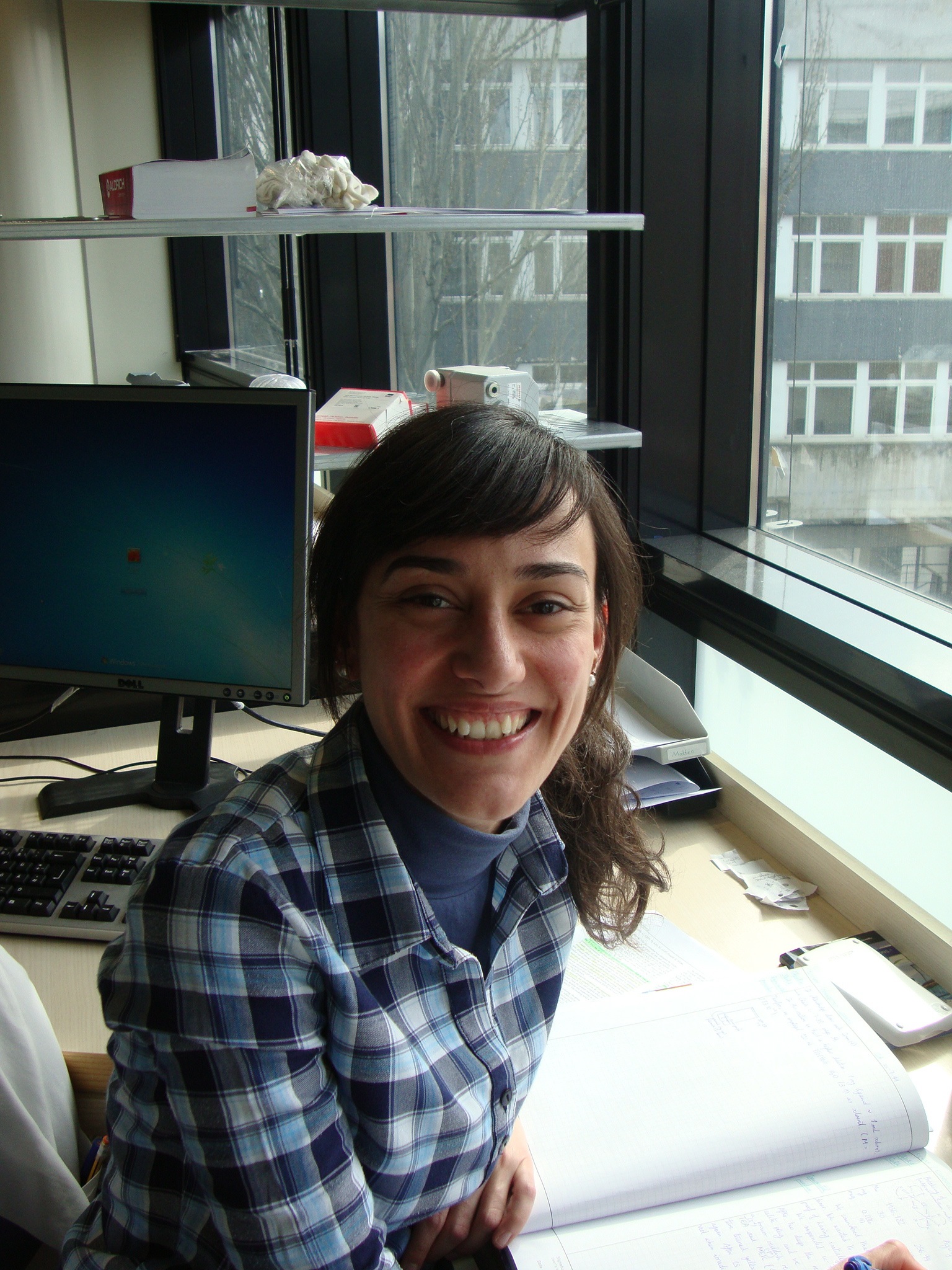Dr. Cristina Cebrian-Avilla
Post-Doc
Office: ISIS 2.31 Telp: +33 368 855 171 FAX: +33 368 855 242 Email: cebrianavila@unistra.fr
Cristina Cebrián was born on July 16th 1984 in Ayora (Valencia, Spain). She started to study Chemistry in Ciudad Real (University of Castilla-La Mancha, UCLM), where she obtained her degree in 2007. In the same university, she initiated her PhD (FPU Fellowship) within the graduate program Sustainable Chemistry under the supervision of Prof. Ángel Díaz and Dr. Pilar Prieto. Her thesis dealt with the design, synthesis and characterization of new 1,2,4-triazole derivatives with application as new materials. Moreover, during her PhD she performed three short predoctoral stays. She spent 4 months in Prof. Cossío’s group in San Sebastián (UPV-EHU, Spain), where she started to work on theoretical calculations. On the other hand, two additional stays of 6 and 2 months (DAAD Fellowship), respectively, in Prof. De Cola’s group in Münster (WWU, Germany) allowed her to move into the organometallic field.
In February 2012, she rejoined the group of Prof. De Cola as a postdoctoral researcher working on the development of new electroluminescent materials based on non-iridium systems for application in Organic Light-Emitting Devices (OLEDs), as a part of the BMBF project titled So-Light. In September 2012, the whole group moved to the Institut de Science et d'Ingénerie Supramoléculaires (I.S.I.S.) (University of Strasbourg). Currently she is working on the project funded by Solvay concerning the synthesis of iridium(III) complexes as dopants for OLEDs with improved device efficiency and color purity.
Her main research activities have covered:
1) The development of synthetic methods to obtain a wide range of 1H-1,2,4-triazole derivatives, paying special attention to energy efficiency and minimization of solvent employment for improving the overall sustainability of the process (see Aus. J. Chem. 2009, 62, 1600; Synlett 2010, 55).
2) The synthesis of functional materials by means of a rational design of the molecular building blocks, such as new π-conjugated polymers containing thiophene and 1,2,4-triazole units and their interesting electrochromic behaviour (Electrochim. Acta 2011, 58, 215), ribbon-like self-assembled structures of 4-aryl-4H-1,2,4-triazoles that acted as optical waveguides by propagating photoluminescence (Chem. Commun. 2013, 49, 621) and highly-emitting platinum(II) complexes and their related outstanding PLED devices (Adv. Mater. 2013, 25, 437).
3) The theoretical modelization of reaction mechanisms (Org. Biomol. Chem. 2010, 8, 1000; Chem. Eur. J. 2012, 18, 6217) in microwave-assisted synthesis to explain the different outcome respect to conventional heating, as well as the computational study of the synthesized molecules for the establishment of structure-property relationships (see for instance Green Chem. 2012, 14, 2584).

